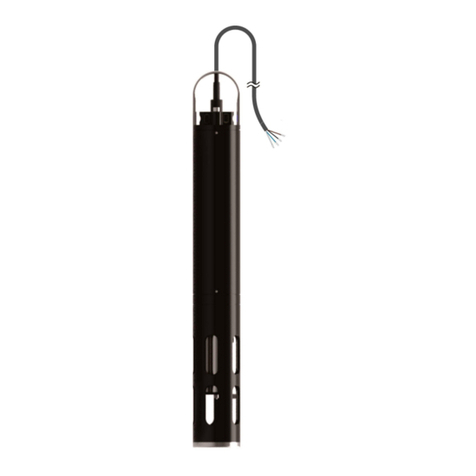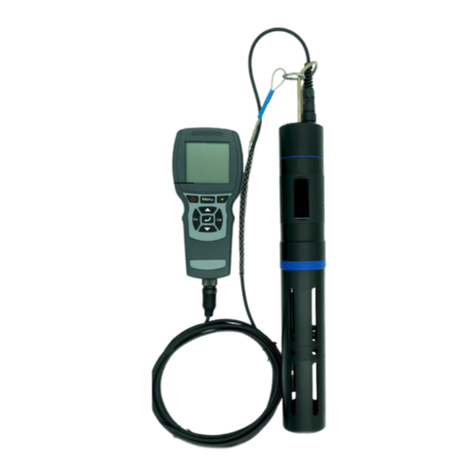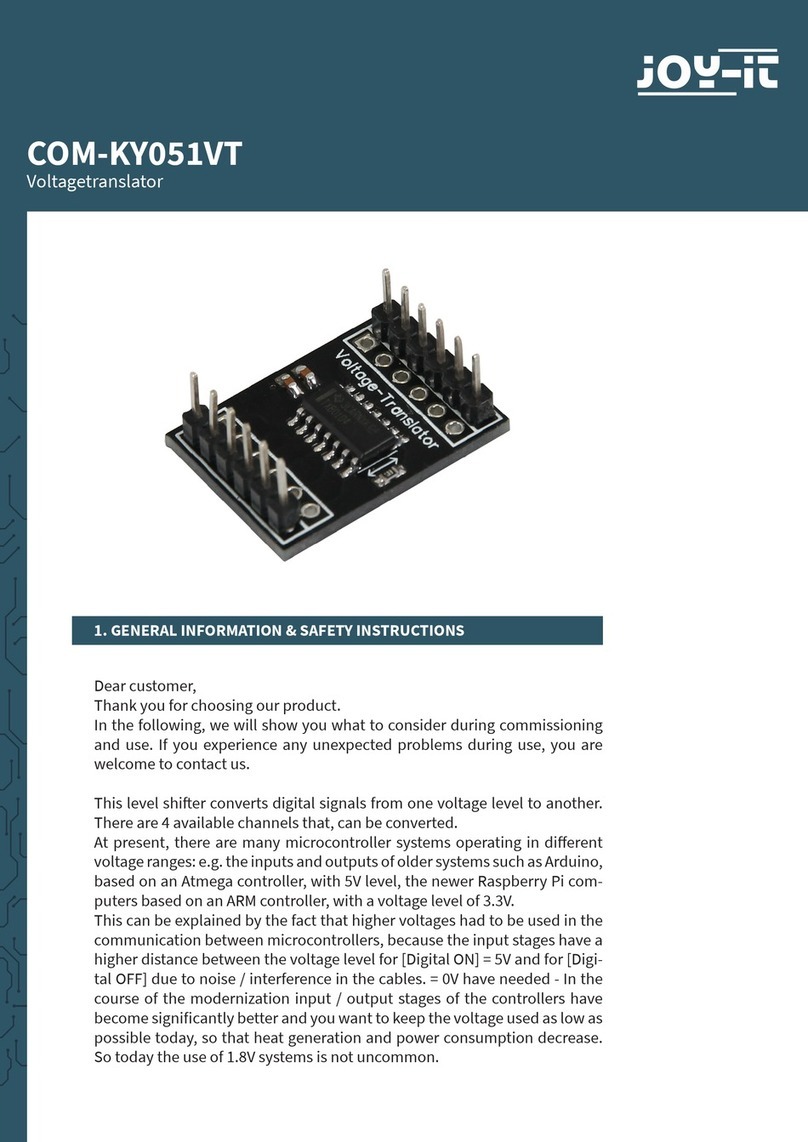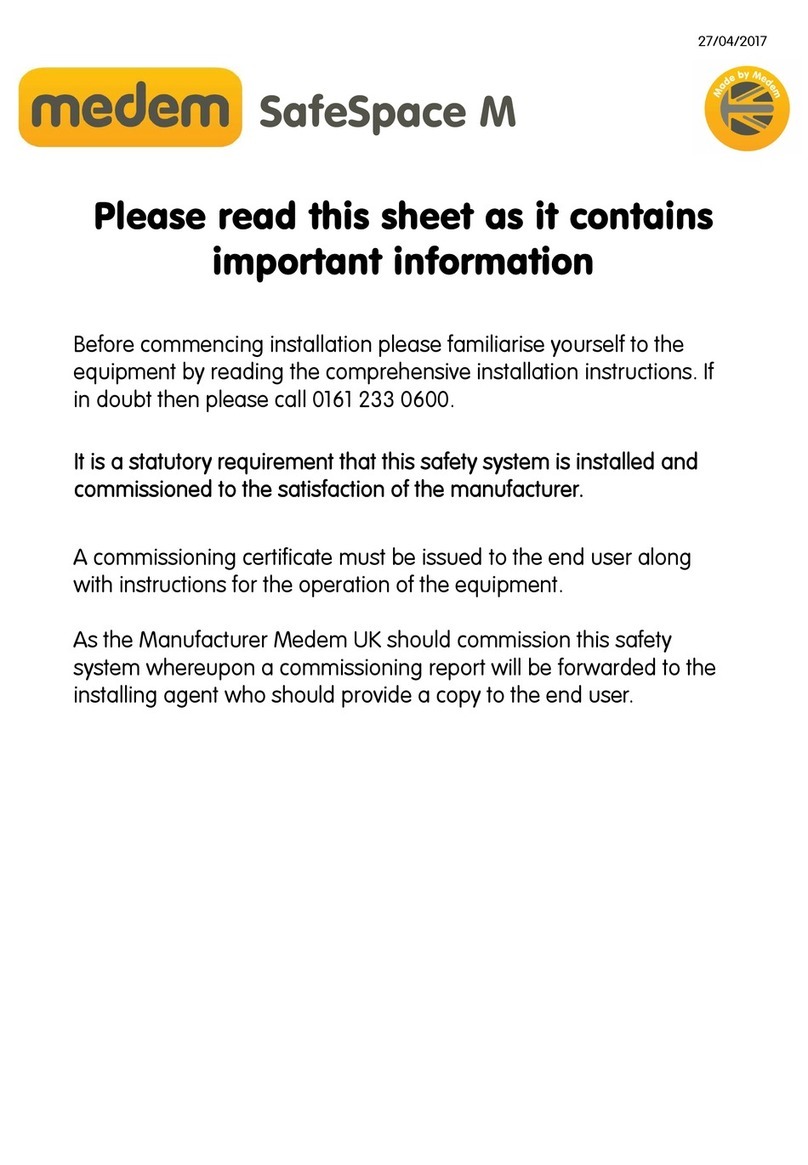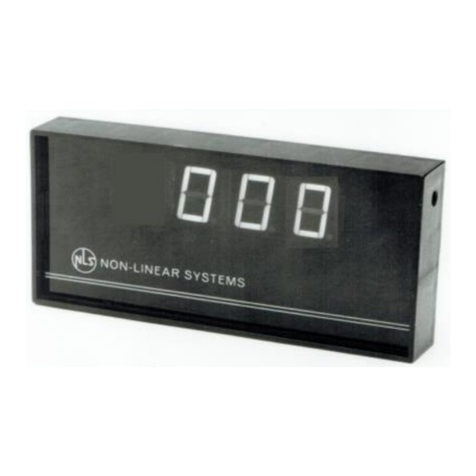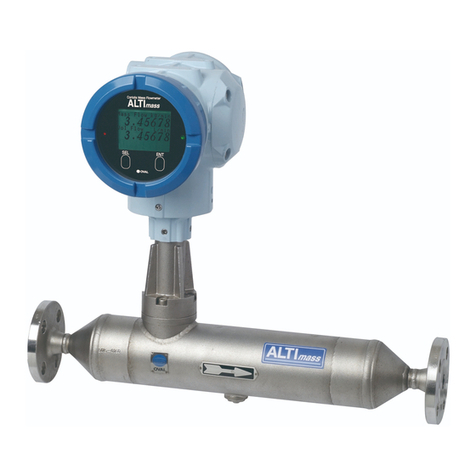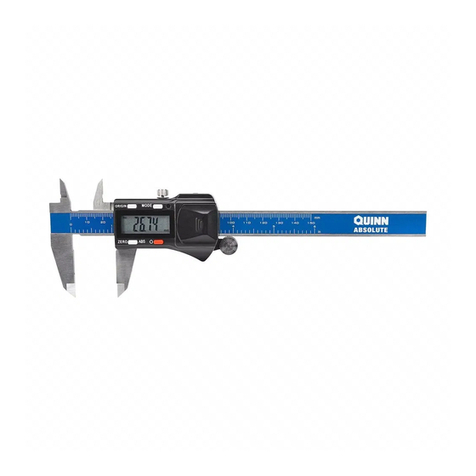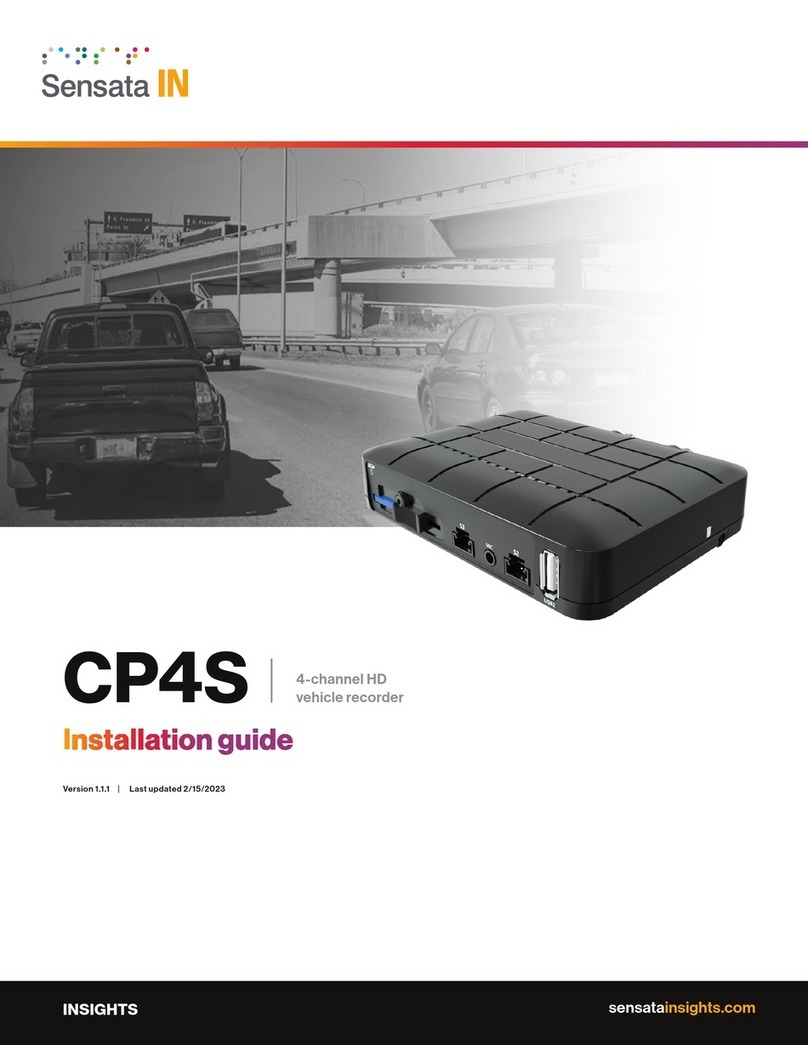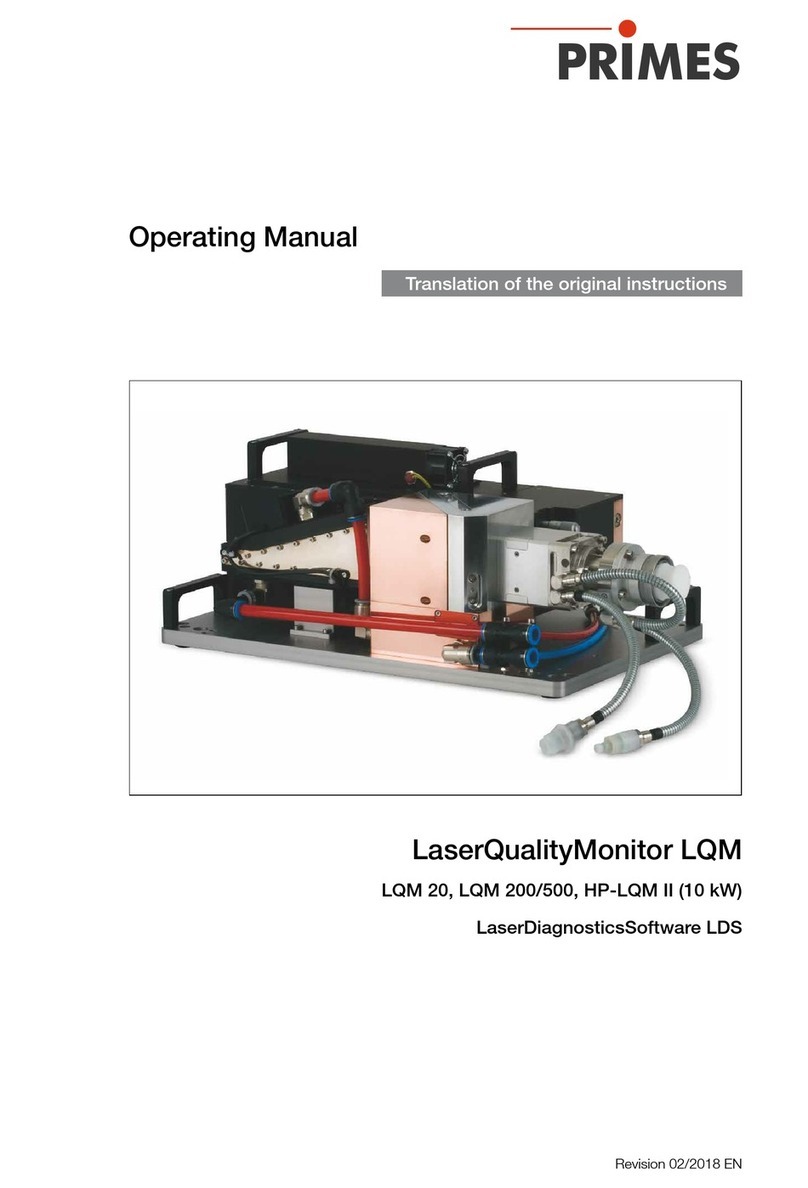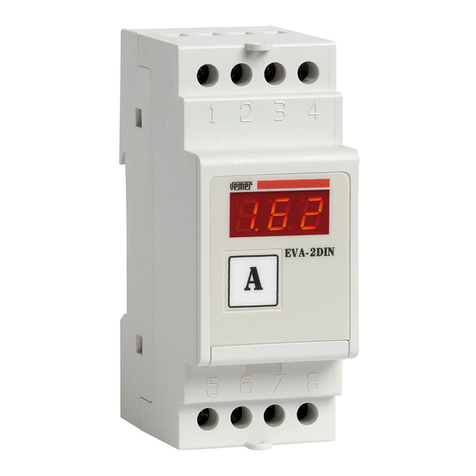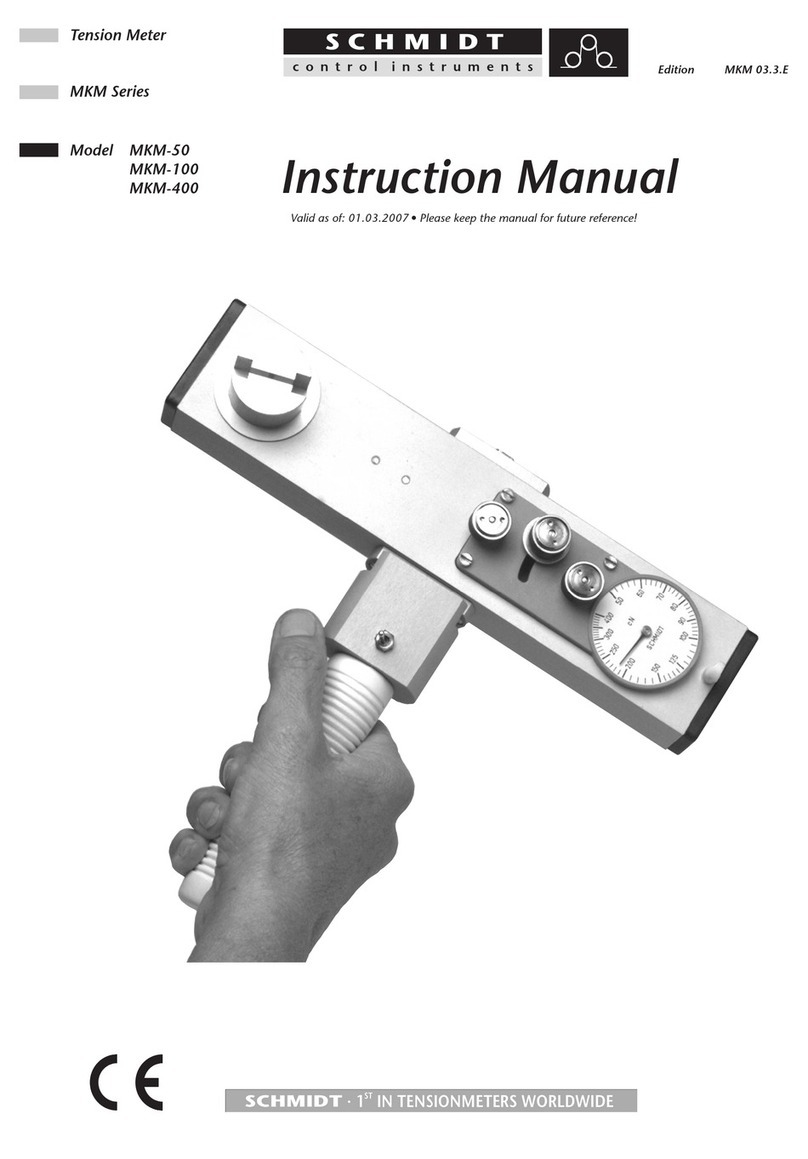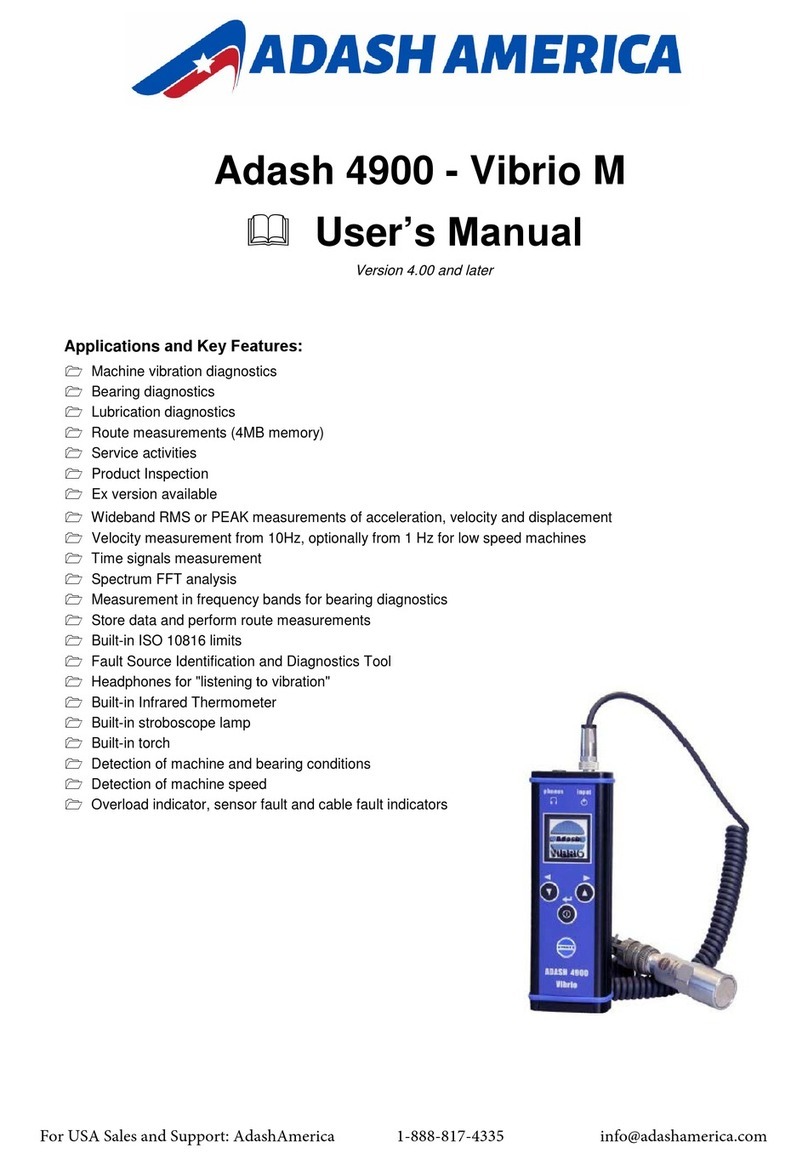BOQU PHS-1705 User manual

Laboratory pH Meter
User Manual

Content
1 Introduction........................................................................................ 1
1.1 Safety precautions...................................................................................... 1
1.2 Display and button......................................................................................2
2 Operation.............................................................................................4
2.1 Calibration................................................................................................ 4
2.1.1 Buffer solution groups.................................................................... 4
2.1.2 One point calibration.......................................................................4
2.1.3 Two point calibration......................................................................5
2.1.4 Three point calibration....................................................................5
2.2 Sample measurement............................................................................... 5
2.3 Temperature measurement..................................................................... 6
2.4 Parameter setting......................................................................................6
2.4.1 Standard buffer solution groups setting..........................................7
2.4.2 Mannual temp-compensation setting..............................................7
2.4.3 Temperature unit setting................................................................. 7

2.4.4 Voice prompt setting.......................................................................7
2.4.5 Printout setting................................................................................ 8
2.4.6 Clear storage data............................................................................8
2.5 Restore factory setting............................................................................. 8
2.6 Data storage.............................................................................................. 8
2.6.1 Store the reading............................................................................. 8
2.6.2 View storage data............................................................................9
2.7 Data printing.............................................................................................9
2.8 Error message......................................................................................... 10
3 Maintenance......................................................................................11
3.1 Meter maintenance................................................................................... 11
3.2 Electrode maintenance............................................................................. 11
4 Technical Indexes............................................................................. 13
5 Buffer solution groups......................................................................14

- 1 -
1.Introduction
Thank you very much for your purchase of our company's high-quality pH meter,
good ease of use, is our product's consistent pursuit.
1.1 Safety precautions
Operator protective measures
Do not work in an explosive environment! Because the instrument
case is not airtight (May be due to spark formation or immersion in
gas corrosion caused by the risk of explosion).
When using chemicals and solvents, follow the operating
instructions and experiments provided by the supplier room safety
procedures to operate!
Operators operate safety precautions
Do not separate the housing of the instrument, allowing only
professional service personnel to repair the instrument!
Please avoid the following environmental factors:
Violent shaking
Long in the sunshine
Atmospheric humidity more than 85%
The presence of corrosive gases
Ambient temperature below 5 ° C or more than 40 ° C
Strong electric field or magnetic field

- 2 -
1.2 Display and button
1. Electrode state (see 5.2 for electrode maintenance)
Good Normal Bad
2. Measurement icon
3. Electrode calibration icon
4. Print (data send out) icon
5. Parameter setting icon
6. Electrode slope or pH/mV reading
7. Read the stability icon/automatic end point icon
8. MTC manual/ATC automatic temperature compensation/measurement process
temperature/Reference temperature value during calibration/electrode calibration
of the zero bias voltage
9. Error Index/Storage Data Index/Calibration Point/Buffer Group

- 3 -
Button description:
Button
Short press
Long press
( 3 seconds)
(OK)
Read
Confirm setting
Set the end point
(Calibration)
Calibration
Calibration data recall
(ON/OFF)
Turn on/ Exit
Turn off
(Store/Exit)
Measurement data
storage
/Exit
View storage data
(Mode)
Mode switch
Decrease value
-------
(Setup)
Parameter setting
Increase value
-------

- 4 -
2. Operation
2.1 Calibration
2.1.1 Buffer solution groups
The instrument can be calibrated for 1, 2 or 3 points. During calibration, the meter
automatically recognizes the pH of the standard buffer solution. The automatic
temperature compensation procedure is solidified in the meter (see appendix).
The instrument has 8 sets of buffer solution (see appendix). The settings for the
buffer solution group refer to 2.4.1.
2.1.2 One point calibration
2.1.2.1 Calibration
Place the electrode in the buffer and press the "CAL" button to start the
calibration. The calibration icon will be displayed. After the signal is stabilized,
the instrument will automatically end according to the preselected end point or
press the "OK" button.
2.1.2.2 Save the calibration results
After measuring the value is stable, press the "OK" button, the instrument shows
the zero and slope, automatically returned to the measurement screen.
Note:
When performing a little calibration, only zero is adjusted. If the electrode is
over-calibrated before, its slope will be saved, otherwise the theoretical slope
(-59.16mV/pH) is taken. Press the "CAL" button, the meter will display the slope

- 5 -
and zero value, and then the instrument returns to the measurement screen.
2.1.3 Two point calibration
Step 1 Perform one point calibration as described in 2.1.2.1.
(Do not press the "OK" button after the instrument's automatic end point or
manual end point, otherwise it will return to the measurement state.)
Step 2 Rinse the electrode with deionized water.
Step 3 Place the electrode in the next calibration buffer and press the "CAL"
button to start the next calibration.
After the signal is stabilized, the instrument will automatically end according to
the preselected end point or press the "OK" button.
Step 4 Refer to 2.1.2.2
2.1.4 Three point calibration
As in 2.1.3 for 3-point calibration.
Note:
It is recommended to use a temperature probe or an electrode with a built-in
temperature probe. If the MTC (manual temperature compensation) mode is used,
all buffers and sample solutions should be kept at the same set temperature.
In order to ensure accurate pH readings, calibration should be performed
periodically.
2.2 Sample measurement
Place the electrode in the sample solution and press the "OK" button to start the
measurement, and the decimal point on the screen flashes. The automatic

- 6 -
measurement end point A is the default setting for the instrument. When the
electrode output is stable, the display is automatically fixed and the pH of the
sample solution is displayed.
Press and hold the "OK" button, can switch between automatic and manual
measurement mode end. To manually measure an end point, press the "OK"
button to display the value.
pH and mV measurement stability based on: If the signal changes within 6
seconds is not greater than 0.1mV, the instrument will reach the end of the
measurement.
To view the mV value during the pH measurement, simply press the "Mode"
button to execute the mV (ORP) measurement, according to the same steps as the
pH measurement.
2.3 Temperature measurement
To improve accuracy, we recommend using a temperature probe or an electrode
with a built-in temperature probe. When using the temperature probe, the screen
displays the ATC symbol and the sample temperature.
Note: This instrument uses only the NTC30k temperature probe.
2.4 Parameter setting
Press the "Setup" key to enter the parameter setting mode, press "Setup"/"Mode"
to select the desired setting parameters,
Press "Exit" to exit the parameter setting mode, return to the measurement mode;
Press "OK" to enter the corresponding parameter setting page, press the

- 7 -
"Setup"/"Mode" to adjust the parameters,
Press "Exit" to exit the corresponding parameter setting page, return to the
parameter setting mode;
2.4.1 Set the buffer solution group
Appears "bUF", press "OK" to enter the set buffer solution group mode
Note: Appendix 5.1 is a built-in buffer solution group.
Default: 1
2.4.2 Manual temperature compensation setting
"MTC" appears, press "OK" to enter the manual temperature compensation
setting mode
Note: When the instrument does not detect the temperature probe, it will
automatically switch to manual temperature compensation mode, and display
MTC.
Default: 25 ℃
2.4.3 Temperature unit setting
"TU" appears, press "OK" to enter the temperature unit setting mode
Default: ℃
2.4.4 Voice prompt setting
"BUZ" appears, press "OK" to enter the voice prompt setting mode
Default: ON (with voice prompt).

- 8 -
2.4.5 Print setting
"Prt" appears, press "OK" to enter the printout setting mode
Note: the automatic end, manual end or calibration is completed, the
data is printed from the set;
The following conditions are not affected by this setting
1. Boot, automatic test print output
2. Print storage data
Default: ON (automatic printout)
2.4.6 Clear storage data
Appears "MR CLr", press "OK" to enter the clear storage data mode,
Press "read" to confirm, there "MR nUL", said the removal was successful,
Automatically exit this setting.
2.4.7 LCD backlight setting
Appears "LEd", press “OK” to enter the LCD backlight setting mode,
Default: ON
2.5 Restore factory setting
Instrument in the boot state,
Press the "OK", "CAL" and "On/Off" keys at the same time,
Long press until the instrument displays "rST", the factory settings are
successfully restored.

- 9 -
2.6 Data storage
2.6.1 Store the reading
The instrument can store pH/mV of 99 measurement result. When the
measurement is finished, short press the "Store" key to store the data and store the
information at the display location to indicate the current storage index.
If "M99" is displayed, press "Store" again, "FUL" will be displayed on the display,
indicating that the memory is full and you need to clear the memory. Please refer
to 2.4.6 for operation.
Note: Each measurement data can only be stored once, and if stored again, the
index does not increase.
2.6.2 View storage data
In the measurement mode, long press the "Store" button to view the stored data
from the memory. Press "Setup"/"Mode" to scroll through the stored results. Press
the "Exit" button to exit.
Note: Only pH measurements can be viewed in pH measurement mode;
Similarly, in mV mode, view the mV measurement results.
2.7 Data printing
The instrument can connect the printer to print the measurement results,
calibration results and the stored data.
It is recommended to use a specified printer to avoid compatibility issues.

- 10 -
2.8 Error message
When an error occurs, an error code is displayed in the display area 8 (see 1.2)
Error code 2 (Err2).
Err1
The measured value (pH / mV)
is out of range
pH:<-2.00 or >16.00
mV:<-1999 or >1999
Check that the electrode cap is
removed and that the electrode is
connected correctly and placed in the
solution to be tested. If the
instrument does not connect the
electrode, insert the shorting plug
into the socket.
Err2
Measure the temperature out
of range
Cal:[℃]<5.0 or >40.0
Meas:[℃]<-5.0 or >105.0
Keep the temperature of the solution
to be measured within the specified
range
Err3
Electrode zero potential is out
of range
|Offset | >60mV
Make sure you use the buffer
correctly and within the validity
period.
Clean or replace the electrode.
Err4
Electrode slope is out of range
Slope <70% or >120%
Make sure you use the buffer
correctly and within the validity
period.
Clean or replace the electrode.
Err5
The instrument does not
recognize the buffer
|∆Eref | <10mV
Make sure you use the buffer
correctly and within the validity
period.
Check whether the same buffer is
reused during calibration.

- 11 -
3. Maintenance
3.1 Meter maintenance
It is forbidden to separate the housing of the instrument.
In addition to the occasional need to use a damp cloth to wipe, the instrument does
not need to do other maintenance. The shell is made of plastic and is subject to
erosion by some organic solvents such as toluene, xylene and butanone. If this is
the case, immediately wipe the spill onto the shell of such solvents.
3.2 Electrode maintenance
Ensure that the electrode is always stored in the appropriate storage solution.
In order to obtain maximum accuracy, any filled or coagulated in the electrode
outside the filling liquid are used to remove the distilled water in time. Always
store the electrode according to the manufacturer's regulations and do not dry
it. If the slope of the electrode drops rapidly, or if the corresponding speed is
slow, the following steps can be used. Depending on the sample, try the
following:
1. For grease, remove the dirt from the surface of the electrode with raw
cotton dipped in acetone or soapy water.
2. If the electrode film is dry, immerse the electrode tip in 0.1M HCl solution
and allow to stand overnight.
3. If protein is accumulated in the membrane, immerse the electrode in the
HCI/pepsin solution to remove the deposit.

- 12 -
4. If the electrode is contaminated with silver sulfide, immerse the electrode in
the thiourea solution to remove the deposit. After the electrode is processed,
recalibrate.
CAUTION: Dispose of the cleaning solution or fill solution according to the
handling regulations for toxic or corrosive substances.

- 13 -
4. Technical indexes
Instrument level: 0.01 level
Measuring range
pH
-2.00…16.00
mV
-1999…1999
Temperature
-5℃---105℃
Resolution
pH
0.01pH
mV
1mV
Temperature
0.1℃
Electronic unit
measurement error
pH
±0.01pH
mV
±1mV
Temperature
±0.3℃
pH calibration
Up to 3 points
Isoelectric point
pH 7.00
Buffer group
8 groups
Power supply
DC5V-1W
Size/Weight
200×210×70mm/0.5kg
Monitor
LCD display
pH input
BNC,impedance >10e+12Ω
Temperature input
RCA(Cinch),NTC30 k Ω
Data storage
Calibration data
198 measurements data (pH, mV each 99)
Print function
Measurement results
Calibration results
Data storage
Use environmental
conditions
Temperature
5...40℃
Relative humidity
5%...80%(Not condensate)
Installation category
Ⅱ
Pollution level
2
Altitude
<=2000 meters

- 14 -
5. Buffer solution groups
-1 USA group(NIST)
Temp(℃)
pH value
5
1.67
4.01
7.09
10.25
10
1.67
4.00
7.06
10.18
15
1.67
4.00
7.04
10.12
20
1.68
4.00
7.02
10.06
25
1.68
4.01
7.00
10.01
30
1.68
4.01
6.99
9.97
35
1.69
4.02
6.98
9.93
40
1.69
4.03
6.97
9.89
45
1.70
4.04
6.97
9.86
50
1.71
4.06
6.96
9.83
-2 China group(JJG)
Temp(℃)
pH value
5
1.67
4.00
6.95
9.39
13.21
10
1.67
4.00
6.92
9.33
13.01
15
1.67
4.00
6.90
9.28
12.82
20
1.68
4.00
6.88
9.23
12.64
25
1.68
4.00
6.86
9.18
12.46
30
1.68
4.01
6.85
9.14
12.29
35
1.69
4.02
6.84
9.11
12.13
40
1.69
4.03
6.84
9.07
11.98
45
1.70
4.04
6.83
9.04
11.83
50
1.71
4.06
6.83
9.02
11.70

- 15 -
-3 European group
Temp(℃)
pH value
5
2.02
4.01
7.09
9.45
11.72
10
2.01
4.00
7.06
9.38
11.54
15
2.00
4.00
7.04
9.32
11.36
20
2.00
4.00
7.02
9.26
11.18
25
2.00
4.01
7.00
9.21
11.00
30
1.99
4.01
6.99
9.16
10.82
35
1.99
4.02
6.98
9.11
10.64
40
1.98
4.03
6.97
9.06
10.46
45
1.98
4.04
6.97
9.03
10.28
50
1.98
4.06
6.97
8.99
10.10
-4 Japan group(JIS)
Temp(℃)
pH value
5
1.67
4.00
6.95
9.40
10
1.67
4.00
6.92
9.33
15
1.67
4.00
6.90
9.28
20
1.68
4.00
6.88
9.23
25
1.68
4.01
6.87
9.18
30
1.68
4.02
6.85
9.14
35
1.69
4.02
6.84
9.10
40
1.69
4.04
6.84
9.07
45
1.70
4.05
6.83
9.04
50
1.70
4.06
6.83
9.01

- 16 -
-5 Merck group
Temp(℃)
pH value
5
2.01
4.04
7.07
9.16
12.41
10
2.01
4.02
7.05
9.11
12.26
15
2.00
4.01
7.02
9.05
12.10
20
2.00
4.00
7.00
9.00
12.00
25
2.00
4.01
6.98
8.95
11.88
30
2.00
4.01
6.98
8.91
11.72
35
2.00
4.01
6.96
8.88
11.67
40
2.00
4.01
6.95
8.85
11.54
45
2.00
4.01
6.95
8.82
11.44
50
2.00
4.00
6.95
8.79
11.33
-6 DIN(19266)group
Temp(℃)
pH value
5
1.67
4.00
6.95
9.40
10
1.67
4.00
6.92
9.33
15
1.67
4.00
6.90
9.28
20
1.68
4.00
6.88
9.22
25
1.68
4.01
6.86
9.18
30
1.68
4.02
6.85
9.14
35
1.69
4.02
6.84
9.10
40
1.69
4.04
6.84
9.07
45
1.70
4.05
6.83
9.04
50
1.71
4.06
6.83
9.01

- 17 -
-7 DIN (19267) group
Temp(℃)
pH value
5
1.08
4.67
6.87
9.43
13.63
10
1.09
4.67
6.84
9.37
13.37
15
1.09
4.66
6.82
9.32
13.16
20
1.09
4.66
6.80
9.27
12.96
25
1.09
4.65
6.79
9.23
12.75
30
1.10
4.65
6.78
9.18
12.61
35
1.10
4.65
6.77
9.13
12.45
40
1.10
4.66
6.76
9.09
12.29
45
1.10
4.67
6.76
9.04
12.09
50
1.11
4.68
6.76
9.00
11.98
-8 Technical group
Temp(℃)
pH value
5
2.02
4.01
7.09
10.65
10
2.01
4.00
7.06
10.39
15
2.00
4.00
7.04
10.26
20
2.00
4.00
7.02
10.13
25
2.00
4.01
7.00
10.00
30
1.99
4.02
6.99
9.87
35
1.99
4.02
6.98
9.74
40
1.98
4.03
6.97
9.61
45
1.98
4.04
6.97
9.48
50
1.98
4.06
6.97
9.35
Table of contents
Other BOQU Measuring Instrument manuals

